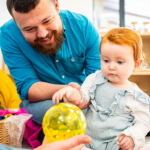

Fennies Child Development Expert Professor Sam Wass provides parents with research-led and thought-provoking blog posts that help you discover ways to support your child as they grow. Sam is a father of two and a child psychologist and neuroscientist best known for Channel 4’s ‘Secret Life of a Four- and Five-Year-Old’s’. Sam provides Fennies with cutting-edge research, which is utilised through our internal staff training, ensuring your children get the very best education.


‘Rrrrearrrgh!’
As he makes this noise Terry, aged 4, is sitting alone on a pile of blocks, staring into the middle distance. But he could have been talking to someone – the noise he makes is amazingly expressive and descriptive of how he’s feeling. With it, Terry is letting out the frustration and the anger at the encounter he just had.
What had happened was that Terry was trying to engage in joint play with some other children at nursery – with some dinosaurs, in a sandpit. But, because his language skills aren’t as fluent as some of the other children, he didn’t have the tools to share what he was imagining, some dinosaurs running away from a predator, with the other children so that they could join in with his play. So their play session had fallen apart and they’d run off, leaving Terry on his own.
The reason that early language development is so important during early childhood is that, in so many ways, language functions as a gateway to other forms of learning. In Terry’s case, language opens the doorway from parallel play – children playing next to each other in their own separate worlds – to cooperative play, which is all about establishing and maintaining their shared goals.
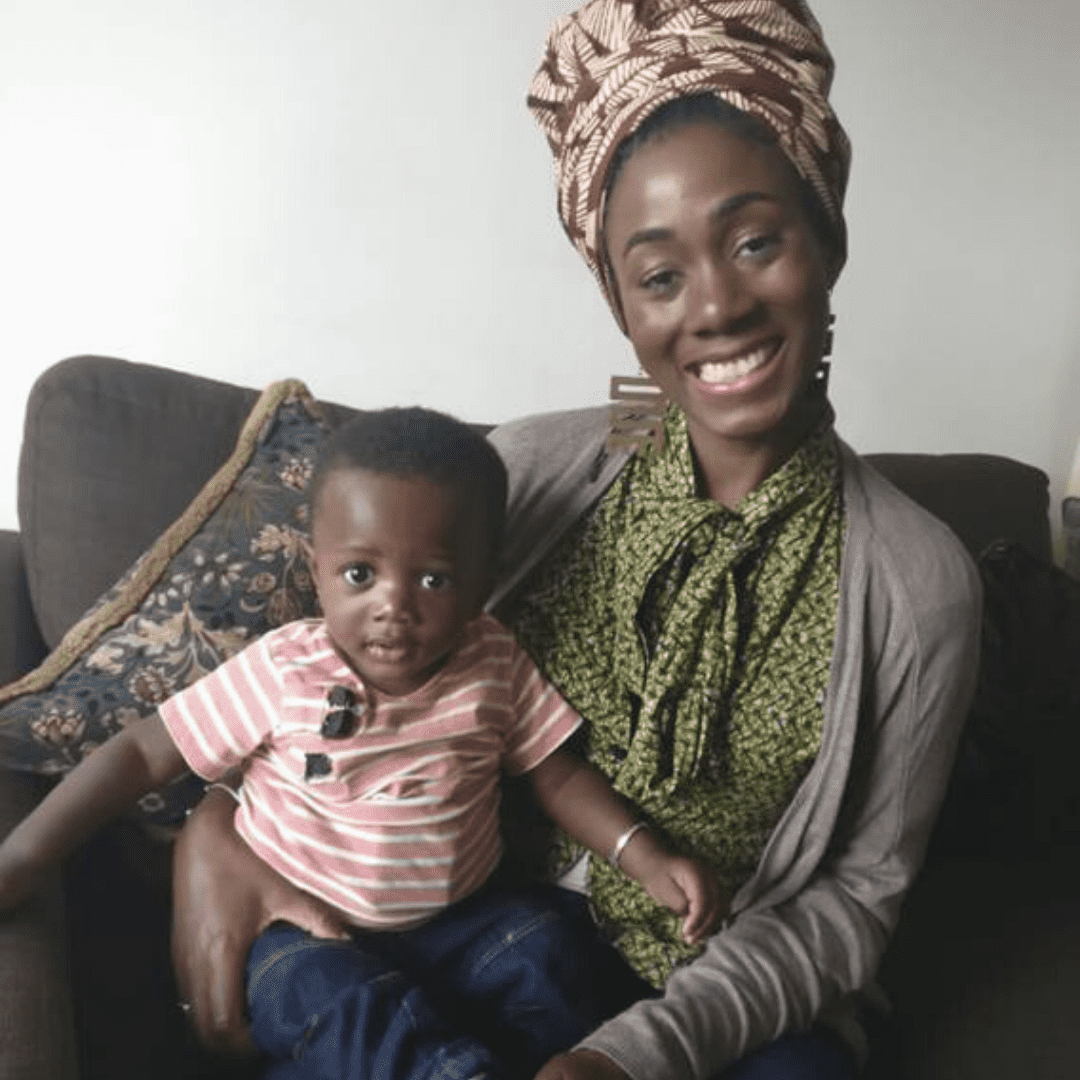

In other settings, speech and language development is a gateway to other skills – even early learning in maths, for example, tends to rely heavily on language skills. It’s also a gateway to social and personal development, such as emotion regulation as language allows a child to communicate to someone else how they’re feeling, which helps them to regulate their own emotions and to get help for others.
As a psychologist and neuroscientist, I run projects that measure parents’ and childrens’ brain activity during early language learning. We also take home recordings in which we fit miniature microphones, cameras, heart rate monitors and movement sensors onto young children and their parents to look at natural language exposure and language production in home settings. In this post, I talk through some of the practical tips about how we can help promote childrens’ early language development, some of this has come from my research and from other similar projects being run by other scientists around the world.
It’s common that, during the first few years of life, big differences can open up between different children in their language skills. In the short term, as we discussed above, this can make a big difference. But in the long term, most childrens’ language development catches up eventually. The most important thing single thing that I want most parents to take away from this blog is that most of these differences in early language skills don’t matter – they simply go away, and correct themselves naturally, over time. That was certainly true in my case! When I was a child I hardly spoke a word before my third birthday, and my parents were concerned but then when I did eventually start speaking I caught up fast, and this is a pattern that we see happening time and time again.
It’s a little bit like learning to walk, which for some parents can be another source of ambition, competitiveness and worry. One parent once said to me that she didn’t understand why other parents sometimes make such a big deal of this, because obviously everyone catches up in the end – it’s not as if you see adults walking down the street and think ‘wow, that person’s really good at walking!’ It’s the same for speech and language development.


It’s a little bit like learning to walk, which for some parents can be another source of ambition, competitiveness and worry. One parent once said to me that she didn’t understand why other parents sometimes make such a big deal of this, because obviously everyone catches up in the end – it’s not as if you see adults walking down the street and think ‘wow, that person’s really good at walking!’ It’s the same for speech and language development.
Bearing in mind that there is massive variability within the range of what counts as ‘normal,’ here are some very rough benchmarks for what to expect from your child’s speech and language development.


Somewhere during the first few months, you’d expect to see some non-verbal communicative behaviours emerge, such as your baby smiling when you smile at them, waving when people arrive and leave, and pointing to request information.
You’d also expect to see some pre-verbal behaviours emerge, like babbling sounds that sound like they’re talking, but not using recognisable words.
During this period most children will show evidence that they understand words that they can’t produce yet, for example, responding to questions like “where’s the ball?” by looking for it.
They will often start producing their first words during this period. Towards the end of the first year, they might start combining one or two words, with phrases like “all gone” for example. Often at this stage, their speech and language will still be hard to understand and often only people who know them well can understand what they’re saying.


During this time most children will start to produce longer sentences of three or four words. Their speech and language will also become clearer so that it’s easier for someone who doesn’t know them to understand what they’re saying.
If you are ever concerned about your child’s language or literacy development, you can get in touch with a specialist language therapist who will be able to provide additional support.
The best place to start thinking about how children’s brains learn language is by thinking about two facts that have emerged over the last 20 years or so – about how children’s brains are different to adults.’
So, before we get onto the practical tips, I’m going to start by introducing two key findings in particular.
The first fact is that the wiring diagram of a child’s brain is messier than an adult’s. This is true in two ways – first, the number of synapses (connections between neurons, the individual cells in the brain) is higher in a child’s brain than in adults – this is thought to peak at around 2-5 years. So in a child’s brain, there are more individual connections between neurons. And, second, whereas an adult’s brain has separate networks of brain regions that are specialised at performing particular tasks, this process of specialisation hasn’t happened yet in children’s brains.
The second fact about brain development is that, in a child’s brain, certain parts of their brain are relatively more mature than others. Simply put, the parts of the brain that ‘do’ automatic processes develop early and those that ‘do’ voluntary, effortful processes develop later.
So, what does all this mean, then for speech and language development?
We’ll get onto that now…
Here are some practical tips, based on neuroscience, about how to talk to children in a way that helps their speech and language as much as possible. The tips are divided into two sections. The first section starts from the idea that childrens’ brains find it harder to ‘tune in’ to a signal (e.g. the person talking to them) and to ‘tune out’ the distracting information in the background. We consider, in that case, how can we change how we talk to children to make it as easy as possible for them to ‘tune in’ to what we’re saying?
This section is about the idea that speech develops through conversation. These ‘conversational’ rhythms between adult and child happen partly through speech, but also at other levels, too – for example, our bodily rhythms, and our brain activity. Research suggests that the earlier we can establish conversational, back-and-forth rhythms, the more this helps early language development.
Early in life, young children with their messy overconnected brains experience everything as one big jumbled confusion. The parts of the brain that allow them to focus on one thing and ignore distractions haven’t developed yet. So how can we make it as easy as possible for children to focus on what we’re saying?
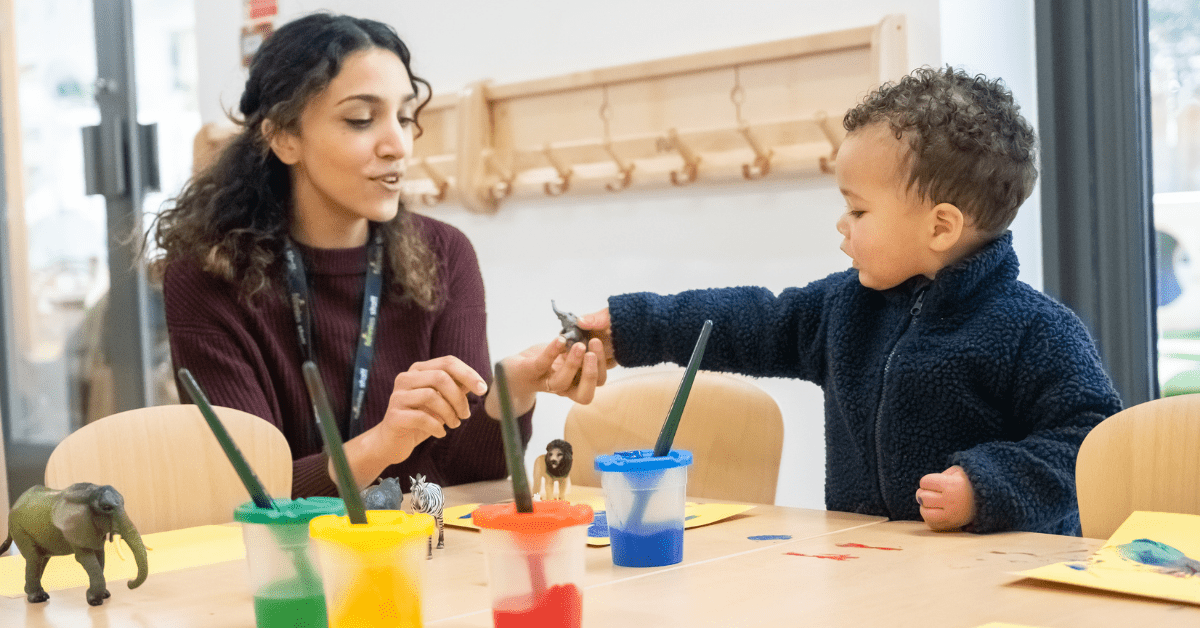

For a child learning speech and language, it helps for them to be able to see your face while you talk. This helps them to map together the sounds that come out of your mouth with the movements that your mouth makes. Faces are hard things for young babies to make sense of, and the more time that your baby spends ‘learning’ your face, the easier it will probably find it to make sense of other people’s faces, including recognising intentions, and emotions, on them – which can support language development.
A good place to start is to think about physical positioning. The best position is for a child to be head-on to you so that they can see your whole mouth and both eyes. Not too far away, because babies are short-sighted.
To make your face and your facial features as easy as possible for a child to identify, it also helps to present your face against a plain white background, with no distracting information behind. You could also highlight the key features of your face, in particular, your eyes and mouth, with make-up as this can also help a young baby to ‘find’ these key facial features.
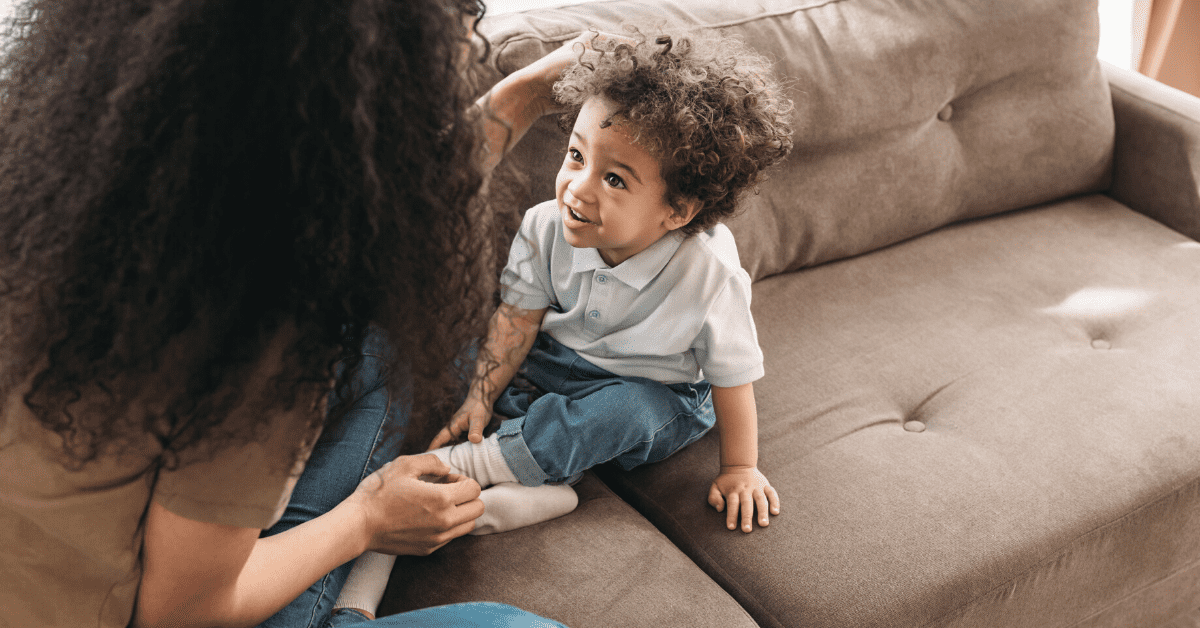

Imagine yourself in a situation where you’re in a pub or a restaurant, and you’re talking to someone, but in an environment where you can hear lots of other conversations going on in the background, too. Your mature adult brain is so practised at doing this that you’re hardly aware of what you’re doing. But picking out one speech stream amongst several is an enormously complicated task and childrens’ brains, for reasons we talked about above, find it much harder to do this.
It’s not surprising, then that studies have shown that children who often have the TV on in the background at home while someone is talking tend to show slower language development. And why studies at schools have shown that the levels of background noise in a school have a big effect on children’s language and reading performance.
Ideally, you want as much of your child’s early language input to be one person talking directly to them, with silence in the background. This will make it easier for your child to ‘tune in’ to your speech.


When we talk to a young child we naturally use a special type of talking, known as ‘babytalk.’ Research suggests that this time of speech sounds more rhythmic, with a more sing-song intonation, with clearer articulation and shorter phrases. All of these factors make it easier for young children to tune in to what you’re saying, by exaggerating the difference between different words.
An actor, when talking on stage, is trained to move their mouths more when they speak because the auditory signal gets degraded when it travels a long way in an auditorium, and articulating clearly makes their speech easier to understand. Young children aren’t listening from a long way away – but their messy, jumbled brains also degrade the speech signal in a similar way. And the solution is the same! Articulating clearly makes it easier for children to understand what you’re saying. (This is why, by the way, stage actors are often used as narrators in childrens’ TV.)
The final thing that can help a child to understand your speech is to say the same thing, over and over again. Babies and young children love repetition. Repeating particular words or phrases over and over again may help young childrens’ noisy and overconnected brains to build up stable and efficient processing patterns. So if your child wants to have one nursery rhyme or phrase repeated over and over again, that’s fine – go with it! There is one book in particular that we must have read to my son at least two or three hundred times!
Learning isn’t just about you talking and me listening. Research suggests that the most effective form of learning is as a dialogue. This is particularly true for language, where these ‘conversational’ rhythms happen partly through speech, but also through bodily rhythms, brain activity, and so on. The earlier we can establish conversational, back-and-forth rhythms the more this helps early language development.
Most children won’t make many speech-like vocalisations until 12 months and up. But ‘proto-conversations’ or early back-and-forth exchanges of facial expressions, gestures and non-verbal ‘oohs’ and ‘aahs,’ start much younger than that.
Echoing young childrens’ early gestures and noises back to them, even when they appear to have been produced at random, can help to establish the conversation and turn-taking that is the bedrock for learning language. And it probably helps both to copy the exact noise that your child makes back at them, and also to try to turn what you think they’re saying into real words, for example, “OK, so you like that, do you?”
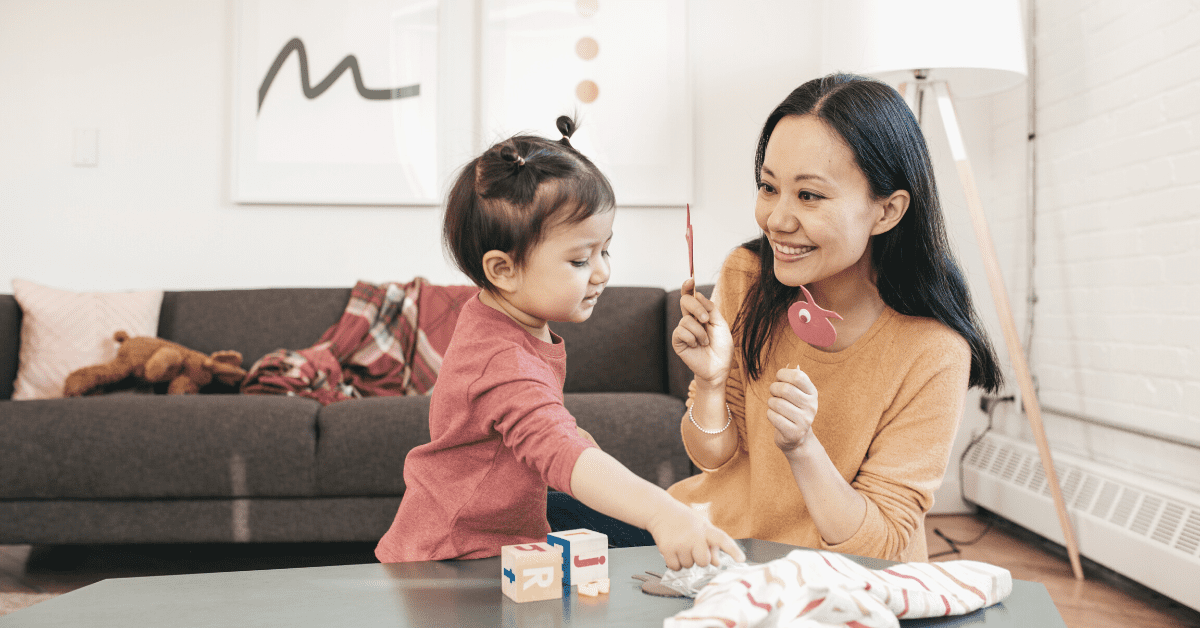

If we wait until a child has pointed at a particular object before we present the word label for that object, then the impact of that word on the child’s brain activity is measurably larger than if we just presented the word label without the child ‘asking’ for the information first. Our brains are more responsive when we’ve predicted and anticipated new information before it arrives.
So the best course of action is to wait until a child has started to show an interest in something and only then tell them what it means.
There is a lot of evidence that children who spend more time reading books early on tend to show better language development during later life. But actually, this isn’t so much about teaching language directly. There is even evidence that younger children find it hard to map 2D representation (like a picture of a ball) onto 3D representation (an actual ball). Instead, probably the most effective way to read books with your child is, not for you to lead the exchange (for example by reading the story from start to finish at your own pace), but rather to sit and wait, and let the child play with the book. And then, when they show interest in something, only then do you present the word label.
All forms of conversation involve turn-taking, which generates rhythms. But ‘babytalk’ is particularly rhythmic, and young children generally prefer other sorts of rhythmic interaction, too such as nursery rhymes of peekaboo games. Why is this? Well, we think this is because, when we’re listening to speech, our internal patterns of neural firing adapt themselves to match the rhythms in the speech stream that we are listening to. And the more rhythmic and predictable our early interactions are, the easier it is for childrens’ brains to learn to do this.
This suggests that all forms of interaction with your child that are rhythmic, predictable and that involve anticipations, from conversations made up entirely of ‘oohs’, to nursery rhymes, to peekaboo, might help sensitise your child to the communicative rhythms in language.


We started this blog by talking about how messy and overconnected childrens’ brains are. Because of this, they are slower and less reliable. When I’m interacting with my own children, and I’m trying to follow their interests, and let them lead the conversation, the thing that I personally find hardest is to give them the time that they need to do this. Much as it’s tempting to try to speed things up by taking the lead, this just isn’t how young children's brains learn best.
In this blog I’ve presented some neuroscience-inspired tips on how to promote childrens’ language development. In particular I’ve emphasised that it’s important to be aware of how noisy and ‘messy’ young childrens’ brains are, and to think how we can simplify our speech to make it as easy as possible for your young child to ‘tune in’ on what we’re saying.
I’ve also emphasised that it’s important to think of learning not as a one-way exchange from you the teacher to your child the student. But instead think of it as a conversation, a two-way exchange, that starts even during the early stages of infancy.
I hope that these tips have been helpful! If you’ve got any questions, or queries, then please do get in touch.
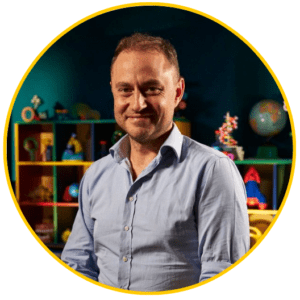

Child Development Expert


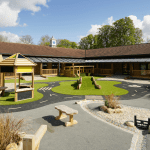

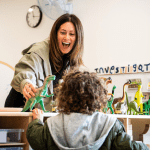







View All
This website uses cookies so that we can provide you with the best user experience possible. Cookie information is stored in your browser and performs functions such as recognising you when you return to our website and helping our team to understand which sections of the website you find most interesting and useful.
You can read out full privacy policy here
Strictly Necessary Cookie should be enabled at all times so that we can save your preferences for cookie settings.
If you disable this cookie, we will not be able to save your preferences. This means that every time you visit this website you will need to enable or disable cookies again.